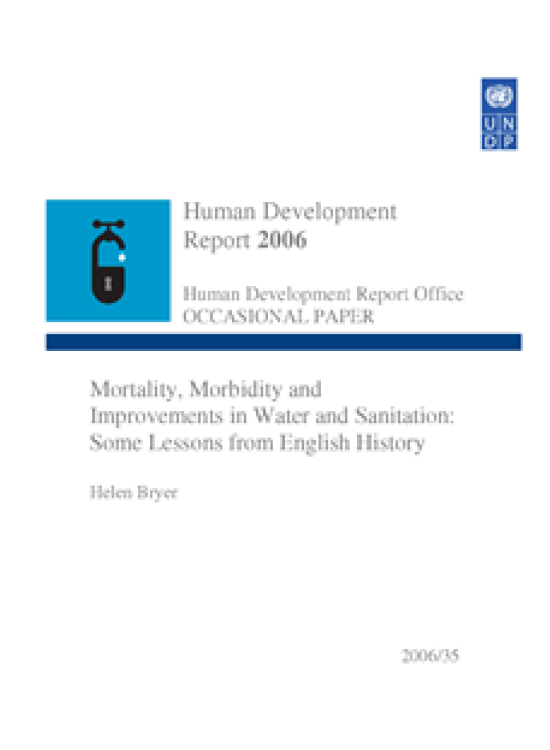Mortality, Morbidity and Improvements in Water and Sanitation
Some Lessons from English History

Download Report by Language
Document
bryerhelen.pdf
(297.93 KB)
Citation
Bryer, Helen. 2006. Mortality, Morbidity and Improvements in Water and Sanitation: Some Lessons from English History. New York.
Mortality, Morbidity and Improvements in Water and Sanitation
Some Lessons from English History
Posted on: January 01, 2006
Improved water and sanitation were critical factors in the falling mortality rates of the later nineteenth century. These reforms saw the number of deaths from typhoid drop rapidly, and the last cholera epidemic in 1866. Alongside and contributing to better personal hygiene and cleaner houses, they reduced other diseases such as typhus. The last recorded case of typhus in London was in 1905. Historians still dispute the relative importance of different factors in this decline – better nutrition, better medicine, better sanitation and so on – but the prevailing consensus is that the ‘sanitary revolution’ was central. The impact of a polluted water supply can be seen in data collected by the eminent statistician, William Farr, showing the dramatic difference in rates of death caused by cholera between the East and West Ends of London. The West Enders were supplied with relatively clean water from upstream, while the East End supplies, drawn from downstream, were heavily contaminated with sewage and other pollution.

